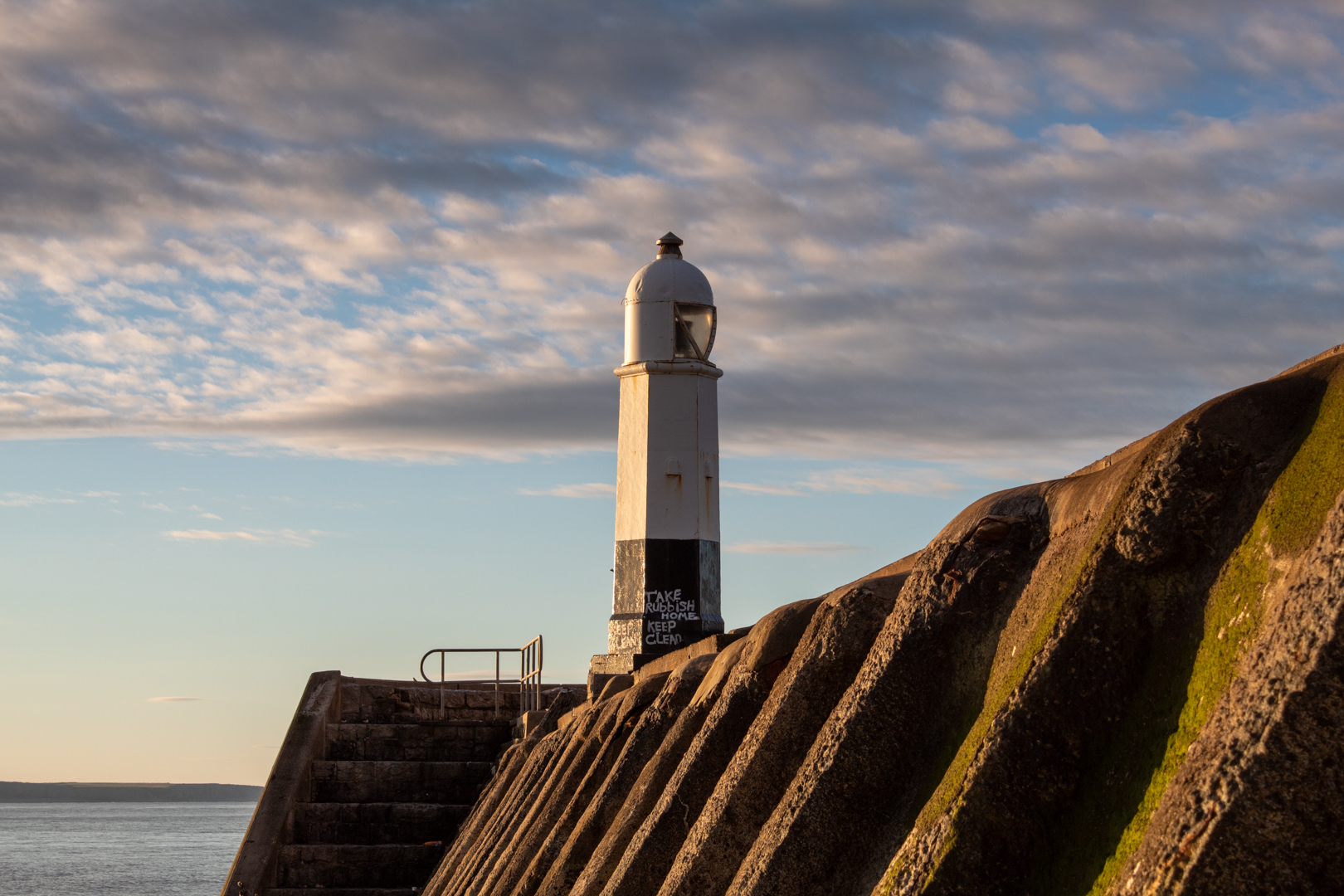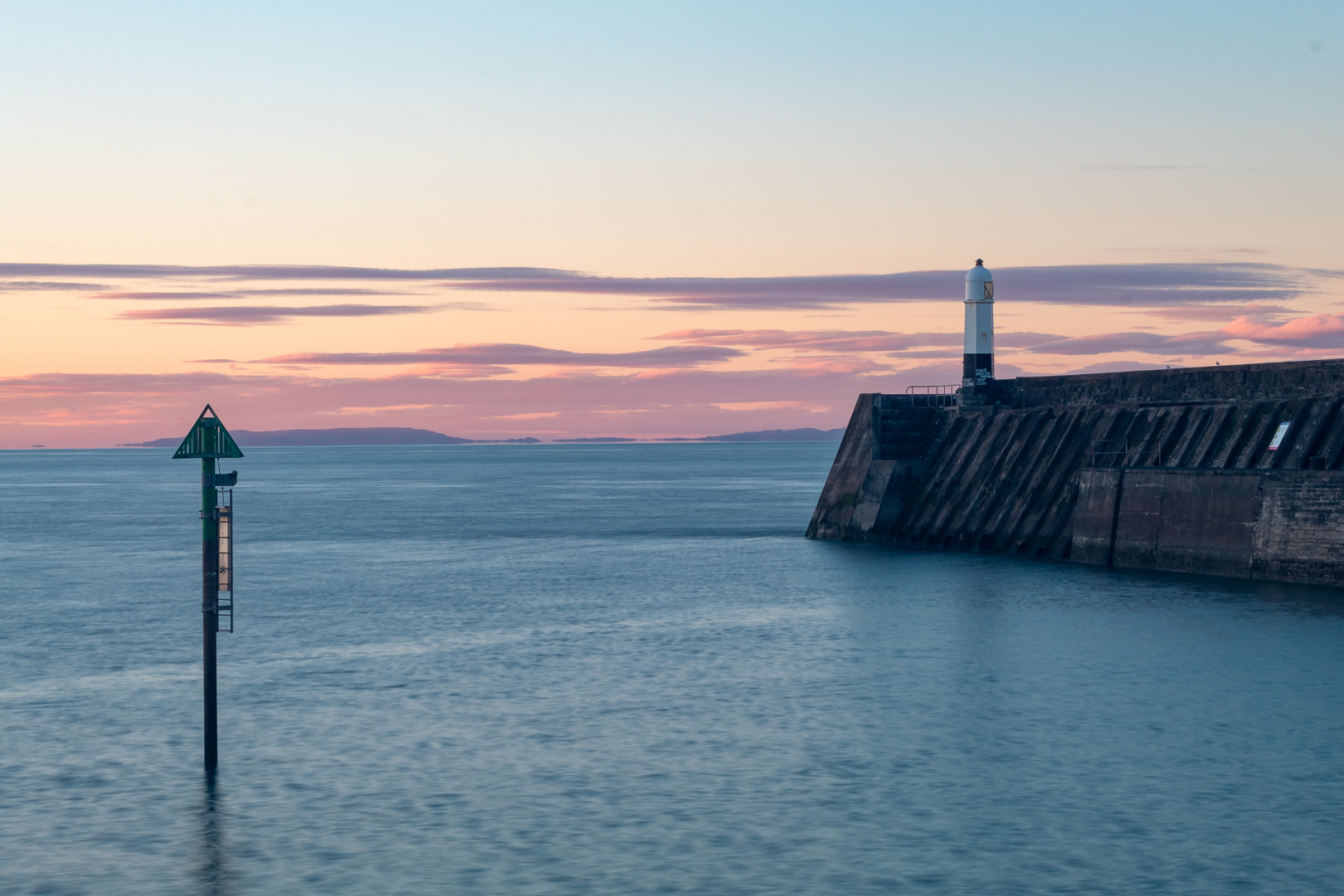Since the widespread use of digital cameras and smartphones, Porthcawl Lighthouse has become famous at certain times of the year.
The lighthouse is situated on the breakwater to Porthcawl and as such when there are high winds and especially when combined with high tides the scene at this lighthouse with the breaking water over the lighthouse is now a staple on TV and newspapers. The scene is easily accessible from the main promenade and a quick internet search for this lighthouse will lead to many such images.
But this is not how I see, or remember Porthcawl lighthouse. Living less than 20 miles from this seaside town I remember the lighthouse bathed in the summer sun on warm balmy seaside trips.
Lately, we have had some good morning forecasts and this day was one.
With the breeze light and the chance of some good sky, I set off before sunrise to try and capture the lighthouse in a different light (Pun intended).
I was happy with the resulting images I took.
The 30-foot lighthouse was built in 1860 and the lamp was washed away in a great storm in 1902.
Originally the lighthouse was coal powered and then converted to run on Gas.
In 1974 the lamp was converted to run on "North Sea Gas" a natural gas. When the engineer arrived to convert the lamp he was told that there wasn't a switch to turn off the lamp but that it was left burning 24 hours a day. He also recalled that the lighthouse gas supply had previously been paid for by a coin meter that constantly had to be fed with "pennies" every day, that was until the meter was converted to take shillings! This meant that the harbourmaster would often have to brave the elements and rough conditions to "feed the meter" to ensure mariners safety.
This was not in use at the time of the conversion but was still in the lighthouse.
Eventually, the lighthouse was upgraded to electric in 1997 and after a £70,000 renovation in 2013, was fitted with its new £12,000 automatic, low energy, LED lamp, which can be seen 10 nautical miles away, the same distance the old gas lamp shone.
The lighthouse was the last coal and gas-powered lighthouse in the UK, and is now protected as it is a grade two listed building.
OK so now for the "iconic view"
Since converting to digital some time ago I have not taken the popular "storm Picture" of the lighthouse although many years ago, perhaps over 25 years ago I had a second hand Canon EOS 650 film camera. It was the first camera I had that was not "point and shoot". My results were varied, to say the least with most of my efforts being in the "hopeful" range.
I shot lots and lots of film then, and I have lots of the images still boxed up and stored around the house but the following image of the Porthcawl Lighthouse was one of the better shots and perhaps is the reason I have not tried to repeat it
Footer:
Visit Information:-
Google Reference
551.47310273328761, -3.6997247977996683
Google Search reference: Porthcawl Lighthouse
What Three Words reference : ///ramps.crisis.unhelpful
Additional information
As Porthcawl is a seaside town visiting this site is easy with lots of car parking and amenities.






Yours is easier to get to than ours and more dramatic. Ours is a hundred feet up from the water and two hundred feet down to walk. Your wave picture is fantastic, and I know how difficult it was to get that.
ReplyDelete